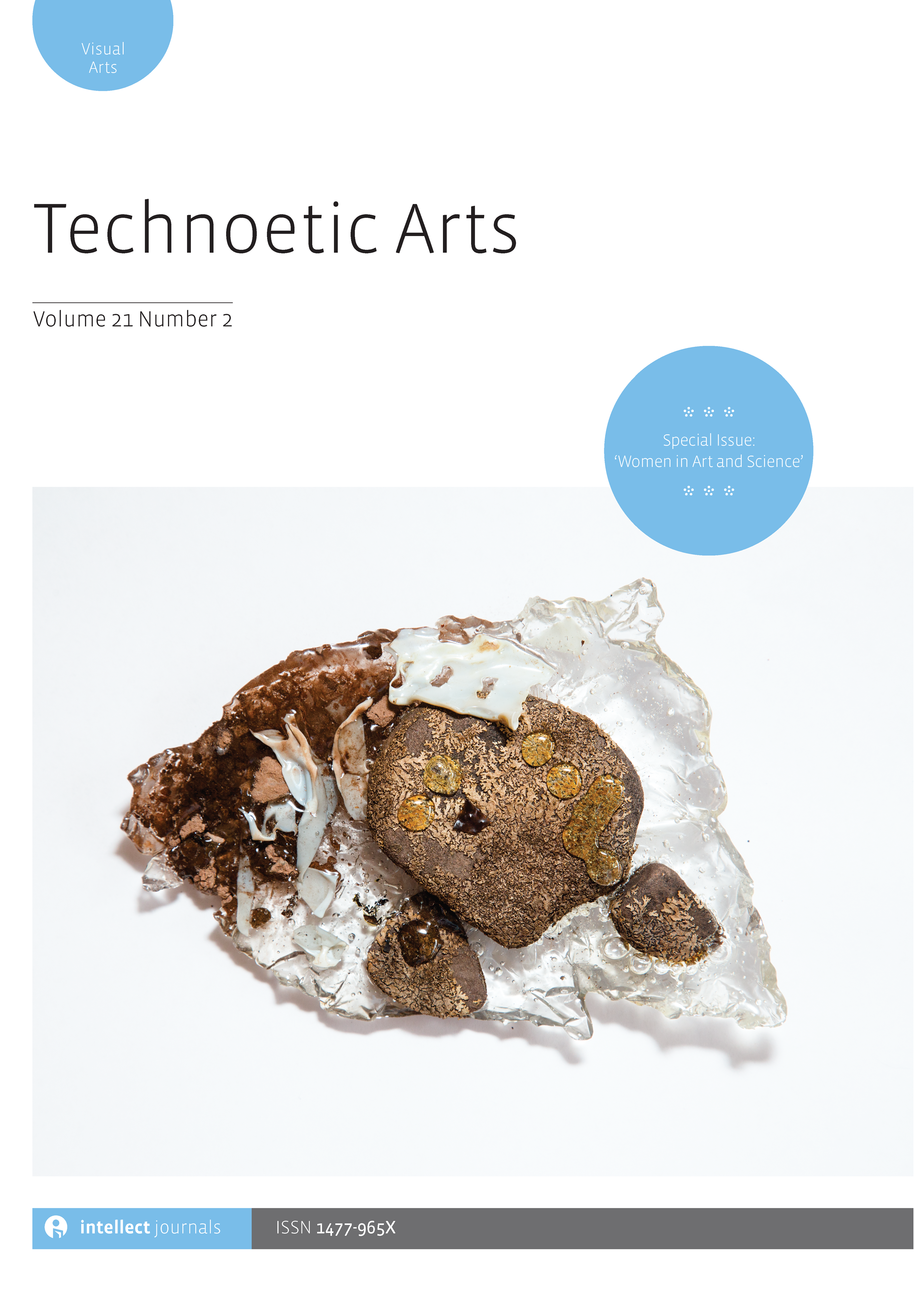-
f Turning queries into questions: For a plurality of perspectives in the age of AI and other frameworks with limited (mind)sets
- Source: Technoetic Arts, Volume 21, Issue 1, Aug 2023, p. 3 - 13
-
- 07 Sep 2023
- Previous Article
- Table of Contents
- Next Article
Abstract
The editorial introduces issue 21.1 of Technoetic Arts via a critical reflection on the artificial intelligence hype (AI hype) that emerged in 2022 and gives an overview of each of the issue’s ten articles. The first four articles engage with new technologies from different positions in art and architecture. These articles include an exploration of the indexical function of images as a means for revealing cultural premises governing public space during the pandemic in Hong Kong, a neuroarchitectural perspective on immersive architectural environments, and an investigation of the link between the popularity of immersive art installations and the emotions these installations generate. The ‘Cryptoart’ section features an ethnographic study of the DADA digital art collective, shedding light on the role of non-fungible tokens (NFTs) in community building. Guest-edited by Professor Tanu Gupta, the Special Section ‘Perspectives from Chandigarh’ constitutes the second part of the journal issue. Based on contributions to the national conference on Contemporary Perspectives in English Language, Literature, and Cultural Studies held on 15–16 July 2022, at Chandigarh University in Punjab, India, the six articles reflect a search for meaningful existence within colonial, patriarchal and biopolitical structures that frame everyday practices of exclusion and oppression. Discussing works of literature and cinema from the European, Japanese and the US American canon, the articles contribute a distinctive perspective to the critical analysis of contemporary societies that are shaped by the idea that progress is technological invention.



